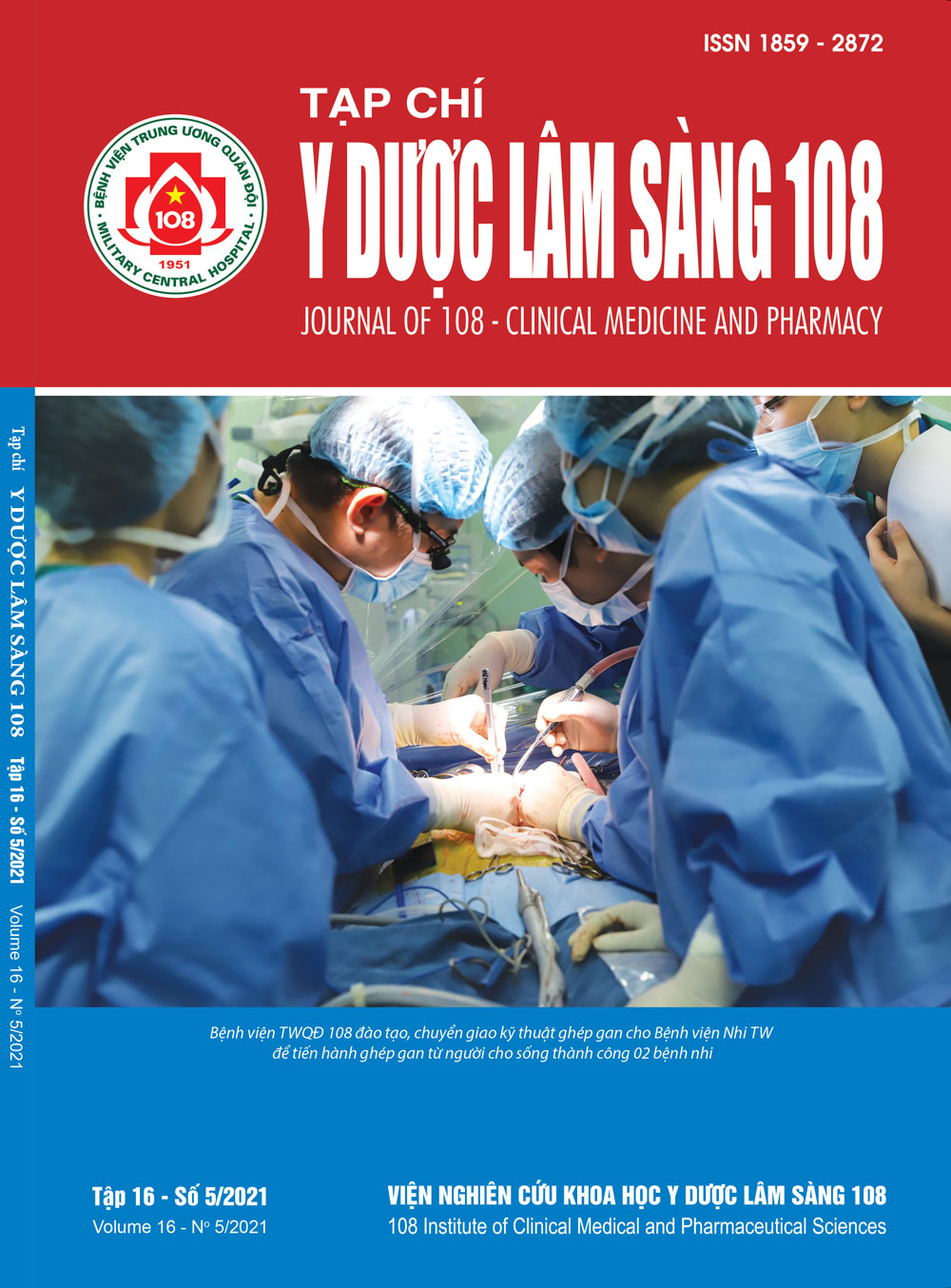First step of evaluating the role of ADC value by using a histogram-based and hot-spot-based approach in differentiation between benign and malignant anterior mediastinal masses
Main Article Content
Keywords
Abstract
Objective: To describe the characteristics of anterior mediastinal masses on conventional magnetic resonance imaging (MRI) and to evaluate the role of measurement of ADC value in the differentiation between benign and malignant mediastinal lesions. Subject and method: We conducted a retrospective cross-sectional study on 47 patients with anterior mediastinal mass who were performed MRI at the University Medical Center Hospital between September 2018 and March 2021 before treatment. Biopsy and histopathological assessment were done after that. A radiologist evaluates the changes of signal intensity on these sequences: T1-weighted VIBE DIXON pre and post contrast with gadolinium, T2 HASTE, T2 TIRM, DWI/ADC, to determine the size, margin of the lesion, the presence of fat, cystic in it. ADCs values were calculated from the ADC maps which were constructed from b = 0 and b = 2000. Result: The study was composed of 47 patients (22 males, 25 females), with 4 benign lesions and 43 malignant lesions. The ADCmean, ADCmedian, ADC10, ADC90 in the histogram-based approach and hot-spot-ROI-based mean ADC for the malignant lesions was significantly lower than those found in benign lesions (p<0.05). The hot-spot-ROI-based mean ADC had the highest value in differentiation between benign and malignant mediastinal lesions, between group A (benign lesions, thymoma A, AB, B1) and group B (thymoma B2, B3 and other malignant lesions). The cutoff point of the ADC value differentiating malignant from benign mediastinal lesions was 1.3×10-3mm2/s with sensitivity of 83.7%, specificity of 75%, and accuracy of 83%. The cutoff point of the ADC value differentiating group A from group B was 0.99×10-3mm2/s with sensitivity of 74.2%, specificity of 93.8%, and accuracy of 80.9%. The cutoff point of the ADC value differentiating lymphoma from other malignant lesions was 0.87×10-3mm2/s with sensitivity of 100%, specificity of 73.7%, and accuracy of 76.7%. Conclusion: Diffusion weighted MRI and measurement of ADC value in histogram-based approach and hot-spot-ROI-based mean ADC are very helpful in the differentiation between benign and malignant anterior mediastinal lesions.
Article Details
References
2. Herneth et al (2003) Apparent diffusion coefficient: A quantitative parameter for in vivo tumor characterization. European journal of radiology 45(3): 208-213.
3. Li et al (2018) Sclerosing thymoma: A rare case report and brief review of literature. Medicine 97(16).
4. Nasr et al (2016) Diffusion weighted MRI of mediastinal masses: Can measurement of ADC value help in the differentiation between benign and malignant lesions. The Egyptian Journal of Radiology and Nuclear Medicine 47(1): 119-125.
5. Priola et al (2015) Differentiation of rebound and lymphoid thymic hyperplasia from anterior mediastinal tumors with dual-echo chemical-shift MR imaging in adulthood: Reliability of the chemical-shift ratio and signal intensity index. Radiology 274(1): 238-249.
6. Razek et al (2009) Assessment of mediastinal tumors with diffusion-weighted single-shot echo-planar MRI. J Magn Reson Imaging 30(3): 535-540.
7. Sabri et al (2017) MR diffusion imaging in mediastinal masses the differentiation between benign and malignant lesions. The Egyptian Journal of Radiology and Nuclear Medicine 48(3): 569-580.
8. Suster, Moran (2017) Diagnostic pathology: Thoracic e-book. Elsevier Health Sciences.
9. Travis et al (2015) World Health Organization classification of tumours of the lung, pleura, thymus and heart. International Agency for Research on Cancer.
10. Zhang et al (2018) A whole-tumor histogram analysis of apparent diffusion coefficient maps for differentiating thymic carcinoma from lymphoma. Korean J Radiol 19(2): 358-365.
 ISSN: 1859 - 2872
ISSN: 1859 - 2872
